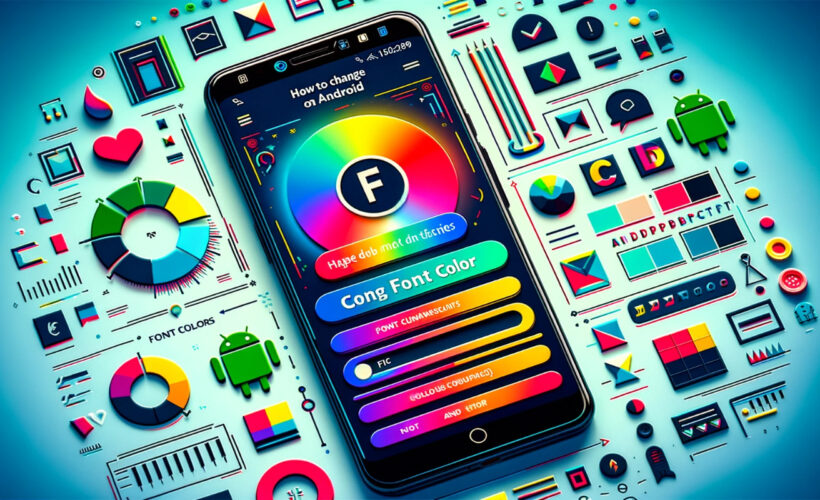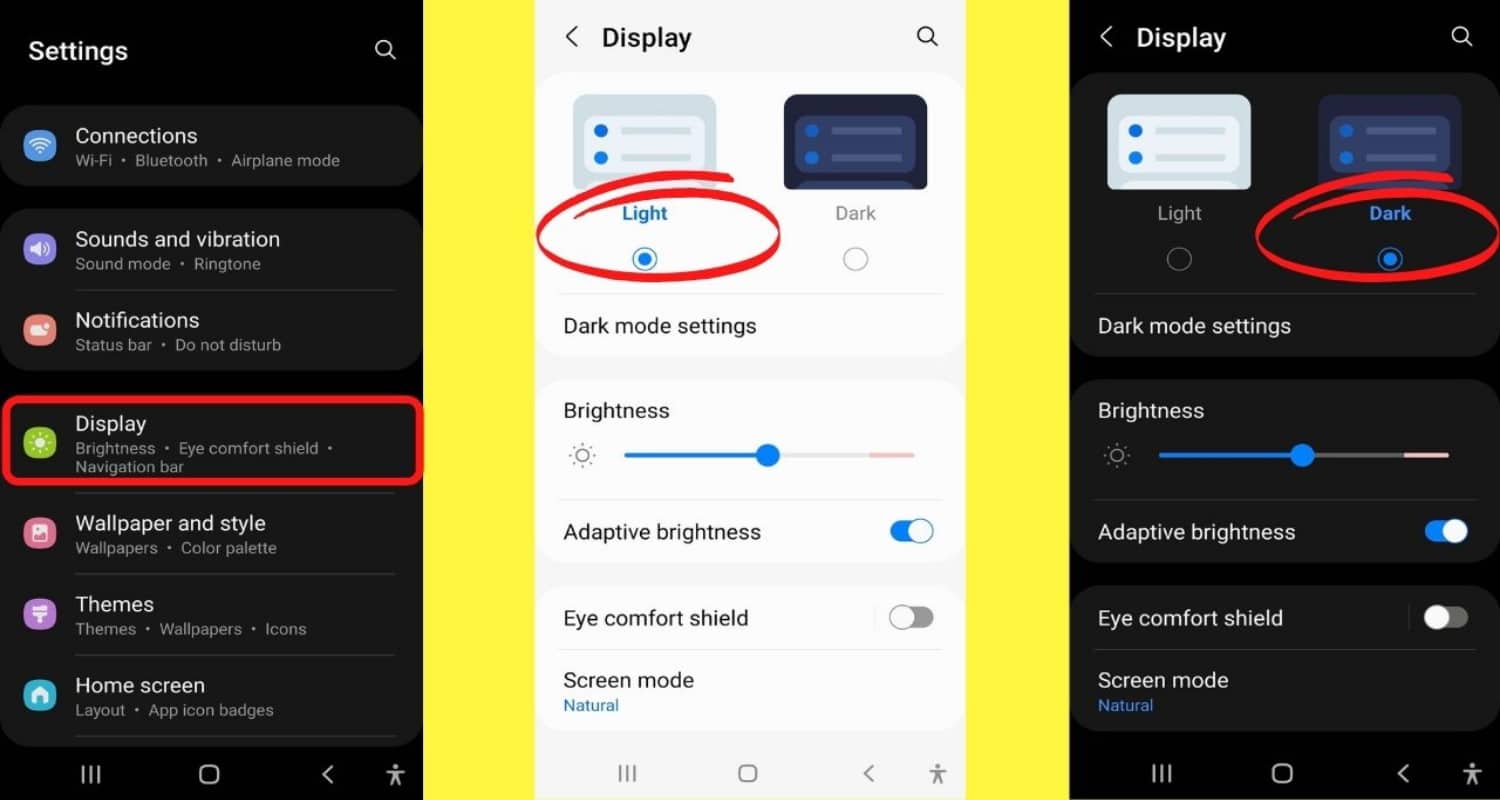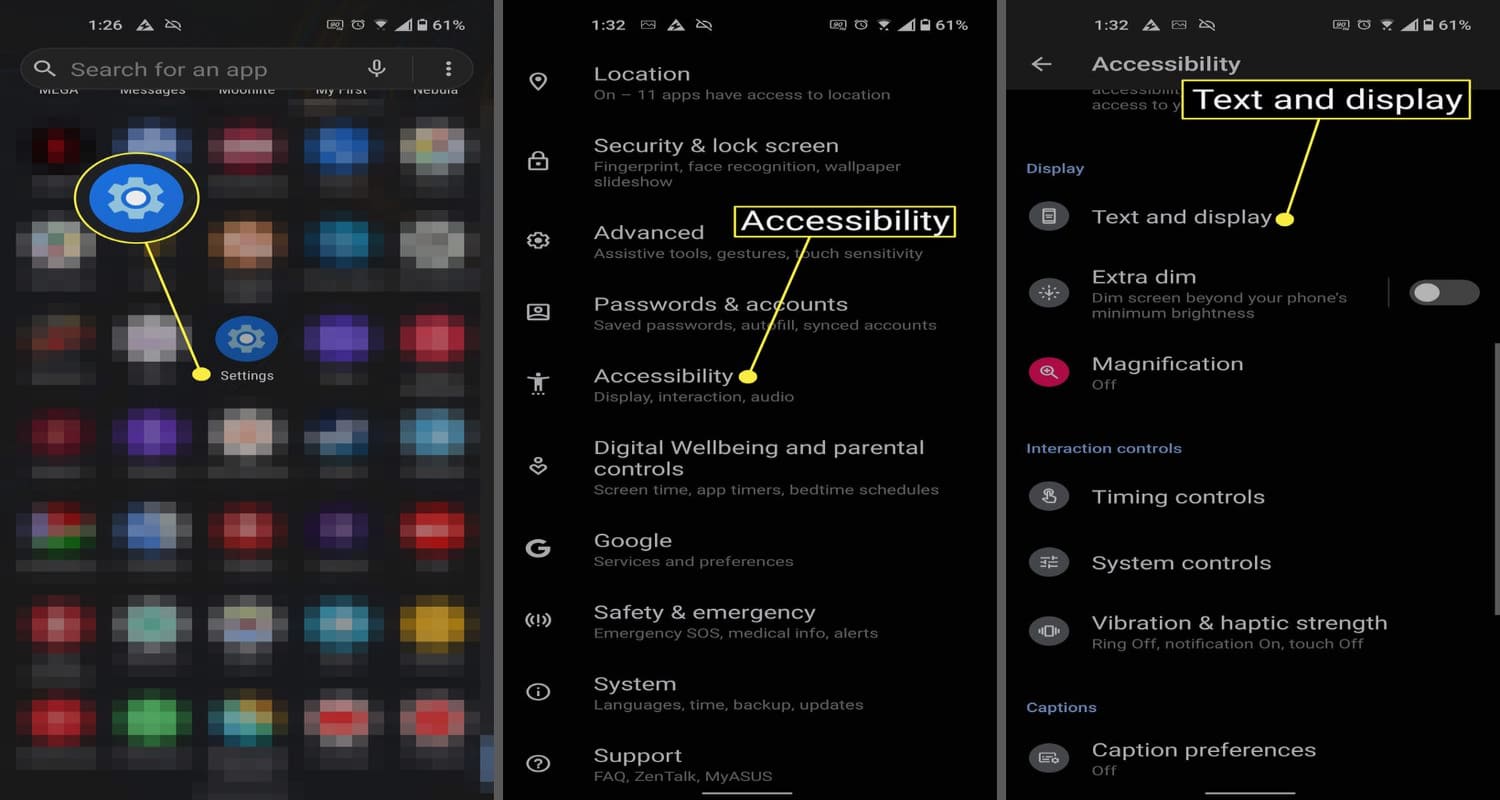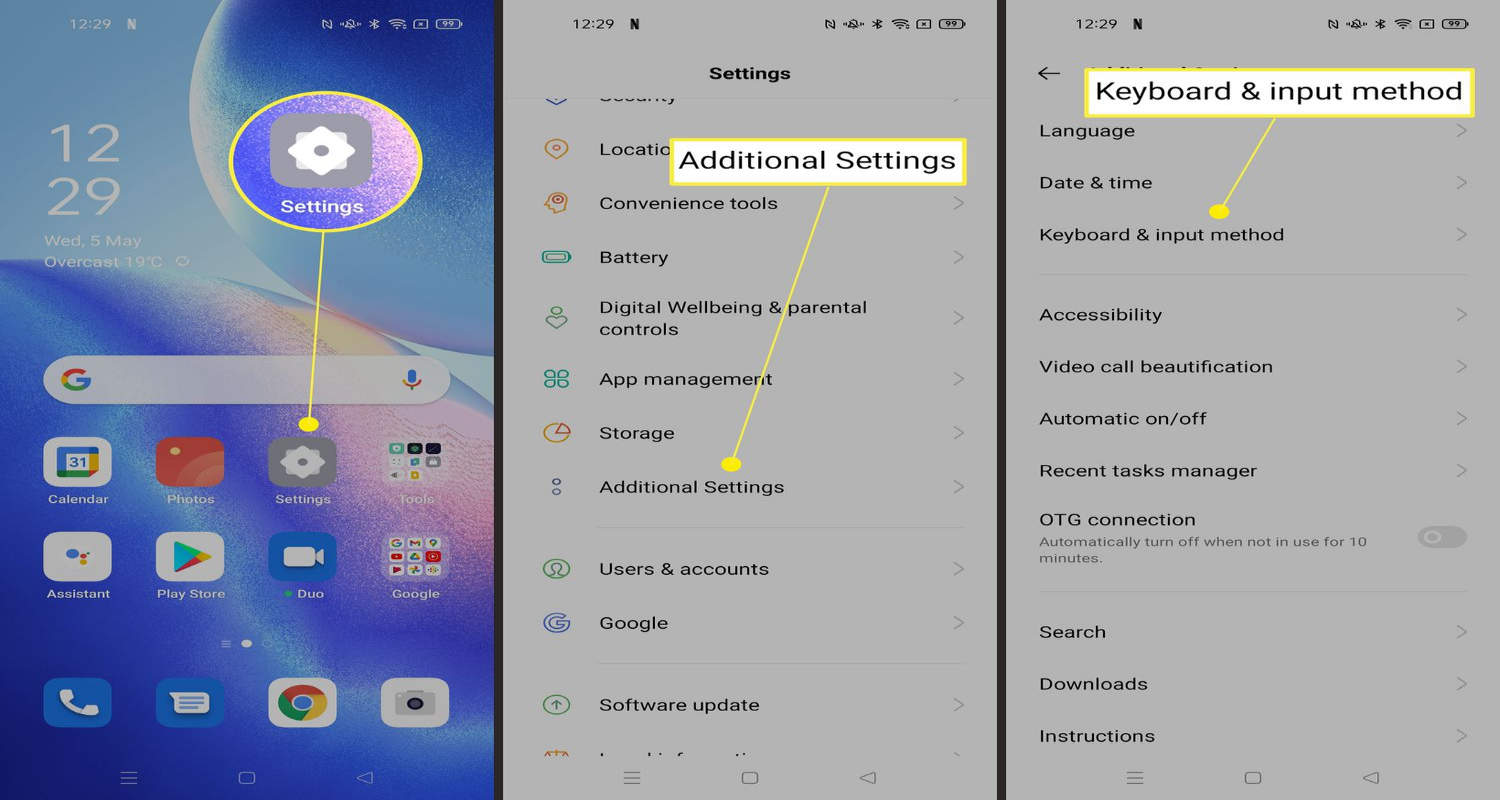
Have you ever glanced at your Android phone and felt a twinge of boredom with its look? That’s the itch for customization talking, and you’re not alone in this. Many Android users crave a more personalized touch, especially when it comes to something as fundamental as font color. It’s not just about aesthetics; it’s about making your device truly yours. But here’s the rub: changing font color on Android isn’t always straightforward. The settings can be elusive, varying across different models and brands, leaving you scrolling through menus in confusion. For a comprehensive guide on customizing your Android device, check out how to use and customize emergency mode on Samsung.
How to Change Font Color on Android? To change font color on Android, navigate to your device’s Settings. Look for Display, Accessibility, or Theme options. Some devices offer direct font color changes, while others require theme adjustments. For more customization, use third-party launcher apps like Nova Launcher or font-changing apps like zFont. Note: Options vary by device and Android version.
Fear not! We’re diving into the nitty-gritty of transforming your Android’s font color, turning this seemingly complex task into a few simple steps. Get ready to give your phone a fresh, vibrant look that screams ‘you’!
See Also: What Is CQA Test On Android?
Understanding Android’s Built-in Settings for Font Color
Android, known for its customization capabilities, offers various settings to adjust the visual aspects of your device, including font color. However, the extent of these customizations can vary based on the Android version and the brand of your device.
Exploring Font Color Options in Android
Most Android devices come with built-in options to modify the display, including font size and style, but direct font color changes are typically limited. Users often find these options in the ‘Display’ or ‘Accessibility’ settings. The availability of direct font color customization is more restricted, often depending on the brand and the Android version. For more insights on Android personalization, explore the best handwriting apps for Android.
Using Dark Theme and Color Inversion
One of the most common ways to indirectly change font color is by using the ‘Dark Theme’ or ‘Color Inversion’ features.
Dark Theme:
- Navigate to ‘Settings’ and select ‘Display.’
- Find and toggle on the ‘Dark Theme’ option.
This changes the overall color scheme, including the font color, to darker shades, reducing eye strain and potentially saving battery life on OLED screens. To learn more about optimizing your device’s battery life, read about the best automatic wallpaper changers for Android.
Color Inversion:
- Go to ‘Settings’ and select ‘Accessibility.’
- Choose ‘Color Inversion’ from the options.
This feature inverts the colors displayed on your screen, which can make text easier to read for some users, though it affects all screen content.
Limitations Across Different Android Versions and Brands
The availability and extent of these features can vary. Newer Android versions tend to offer more comprehensive customization options, including theme and contrast adjustments. However, specific brands might add their own customization layers, offering additional settings or, in some cases, limiting these features. Users should explore their device settings to understand the extent of customization available to them.
Using Font Size and Style Options
Android’s flexibility extends to its font settings, allowing users to adjust font size and style. While these adjustments don’t directly change font color, they significantly impact readability and the overall visual experience on your device.
Adjusting Font Size for Better Visibility
To change the font size:
- Open ‘Settings’ and navigate to ‘Display.’
- Select ‘Font Size’ to adjust the scale. Larger text can improve readability, especially on devices with high-resolution screens.
Exploring Font Style Options
Font style changes can also indirectly affect the visual impact of text:
- In ‘Settings,’ go to ‘Display’ and then ‘Font Style.’
- Browse through available styles. Some styles may appear clearer or more distinct, aiding in readability.
Brands and Models Offering Enhanced Customization
Samsung and LG are notable for providing extensive font customization options in their Android versions. Samsung’s One UI, for instance, offers a variety of font styles and sizes, making it a standout choice for users seeking more control over their device’s display aesthetics.
In summary, while direct font color changes are limited in Android, adjusting font size and style can significantly enhance the visual experience, with brands like Samsung and LG offering the most comprehensive options.
Exploring Themes for Font Color Customization
While exploring themes for font color customization, it’s interesting to note that some themes can also influence the appearance of emojis, answering the query of ‘How to get color emoji on Android.’ The choice of theme can subtly change how emojis look, adding another layer of customization.
How to Use the ‘Themes’ Option
To change the font color through themes:
- Open ‘Settings’ and navigate to ‘Wallpaper & Themes’ (the exact naming may vary by brand).
- Browse through the available themes. Each theme comes with a unique color scheme that applies to the entire interface, including fonts.
- Select a theme and apply it. The change will reflect across the device, altering the font color in menus, settings, and sometimes within apps.
Impact of Theme Selection on Font Color
The choice of theme significantly influences the overall visual experience. Dark themes often come with light-colored fonts for better contrast and readability, while light themes typically feature darker fonts. Some themes might offer more vibrant color schemes, adding a unique flair to the text. It’s important to note that while themes change the font color in the system UI, they might not affect all third-party apps.
In conclusion, while Android doesn’t offer direct font color customization, using the ‘Themes’ option is a practical way to alter the font color as part of a broader aesthetic change.
Accessibility Features for Font Color Changes
Users often wonder, ‘Why are my texts different colors on Android?’ This can be due to the device’s accessibility settings, which might alter text colors for enhanced visibility, especially when high contrast settings are enabled.
High Contrast Fonts and Settings
One of the key features in ‘Accessibility’ is the option for high contrast fonts. This setting makes text stand out more against background colors, improving readability. To enable this:
- Go to ‘Settings’ and select ‘Accessibility.’
- Look for ‘High Contrast Text’ or a similar option and toggle it on.
This feature enhances the text’s color contrast against various backgrounds, making it more legible.
Additional Accessibility Options for Enhanced Visibility
Other accessibility features that can impact font visibility include ‘Color Correction’ and ‘Color Inversion.’ While these settings primarily adjust screen colors, they can also make fonts easier to read by altering background and text color contrasts. These tools are particularly useful for users with specific color vision deficiencies.
In conclusion, Android’s ‘Accessibility’ settings offer valuable tools for enhancing font visibility, including high contrast options, which indirectly affect font color and improve overall readability.
Customization with Launcher Applications
Launcher applications for Android offer a level of customization that goes beyond the standard options available in the device’s settings. These launchers, such as Smart Launcher, GO Launcher, Nova Launcher, Action Launcher, and Apex Launcher, provide extensive customization capabilities, including the ability to change font colors. Here’s a detailed guide on how to use each of these popular launchers to customize font color.
Smart Launcher: Simplified Customization
Some launcher applications also offer the flexibility to change the color of your emojis on Android, adding a personal touch to your messaging experience.
- Download and install Smart Launcher from the Google Play Store.
- Open Smart Launcher and access the ‘Preferences’ menu.
- Navigate to ‘Global Appearance’ where you can adjust the font style and color.
- Select ‘Font Color’ to choose your preferred color for the text.
Smart Launcher is known for its minimalist approach, offering a user-friendly interface for customizing font color.
GO Launcher: Extensive Theme Options
- Install GO Launcher from the Google Play Store.
- Open the app and go to the ‘Themes’ section.
- Select a theme with your desired font color or download new themes from the store.
- Apply the theme to change the font color across your device.
GO Launcher provides a wide range of themes, many of which include unique font colors and styles.
Nova Launcher: Advanced Customization
- Download Nova Launcher and set it as your default home screen.
- Access Nova Settings and go to ‘Look and Feel.’
- Tap on ‘Icon Style’ and then ‘Label.’
- Here, you can change the font color for app labels.
Nova Launcher is ideal for users who want more control over their interface, including detailed font color customization. For additional customization options, discover how to pair Raycon earbuds to an Android phone.
Action Launcher: Intuitive and Quick Setup
- Install Action Launcher from the Google Play Store.
- Open the launcher and head to ‘Settings.’
- Look for ‘Appearance’ options, where you can find settings for font.
- Adjust the font color to your preference under these settings.
Action Launcher is designed for quick and intuitive customization, including easy changes to font color.
Apex Launcher: Personalized Font Color Settings
- Get Apex Launcher from the Google Play Store.
- Launch the app and go to ‘Apex Settings.’
- Select ‘Theme Settings’ and then ‘Font.’
- Choose your desired font color from the available options.
Apex Launcher offers a balance between simplicity and customization, making it easy to change font colors.
In conclusion, each of these launchers provides unique ways to customize the font color on your Android device. Whether you prefer a straightforward approach or more detailed customization, these launchers offer the flexibility to personalize your device’s appearance to suit your style.
Using Custom Font Applications
Custom font applications like zFont and iFont are not just about changing text fonts; they also answer questions like ‘How to change the skin color of emojis on Android’ or ‘How to get brown emojis on Android.’ These apps provide options to change the color of emojis, allowing users to personalize their emoji palette, including changing all emoji skin colors at once for a uniform look.
Introduction to zFont and iFont
zFont and iFont are popular apps available on the Google Play Store, known for their wide selection of fonts and customization features. These apps cater to users who want to personalize their device’s text appearance beyond the default options provided by the Android system. They offer an array of fonts, including different styles and colors, suitable for various preferences and needs.
Changing Font Color with zFont
- Download and install zFont from the Google Play Store.
- Open the app and browse through the font list.
- Select a font with your desired color. zFont provides previews for each font.
- Follow the on-screen instructions to download and apply the font. This may involve enabling specific settings or permissions.
- Once applied, the new font and color will be visible across the device’s UI.
zFont is user-friendly and includes a variety of colored fonts, making it a popular choice for customizing font color.
Customizing Fonts with iFont
- Install iFont from the Google Play Store.
- Launch the app and explore the available fonts. iFont categorizes fonts by language and style.
- Choose a font and select ‘Download.’ Some fonts may offer color variations.
- After downloading, tap ‘Set’ or follow the instructions to apply the font.
- The new font, along with its color, will now be applied to your device.
iFont stands out for its extensive font library and straightforward application process, allowing for easy customization of font styles and colors.
In summary, custom font applications like zFont and iFont provide Android users with an expanded range of options for personalizing font color and style. These apps are particularly useful for those who find the default settings limiting and seek a more distinctive look for their device’s text.
Rooting Your Android Device: Is It Necessary for Font Color Change?
Rooting an Android device means gaining root access or administrative privileges, which allows users to modify the system to a degree not possible under normal conditions. In the context of font color customization, rooting can open up new possibilities but comes with its own set of pros and cons.
Pros and Cons of Rooting for Font Color Customization
Pros:
- Greater Customization: Rooting provides access to system files, enabling more extensive customization options, including font color changes at a system level.
- Access to Specialized Apps: Some apps that offer advanced customization options require root access.
Cons:
- Voiding Warranty: Rooting usually voids the manufacturer’s warranty.
- Security Risks: Rooted devices are more vulnerable to malware and hacking.
- Potential for Bricking: Incorrect rooting procedures can render the device inoperable, a state known as ‘bricking.’
FAQs
Can I change the font color on my Android phone using built-in settings?
Yes, some Android phones, especially from brands like Samsung, HTC, and LG, offer options to change font color in the built-in settings. This includes using dark/light themes and accessibility options for high contrast fonts.
What are some launcher applications I can use to change font color on Android?
Popular launchers like Nova Launcher, Action Launcher, Smart Launcher, GO Launcher, and Apex Launcher can be used to customize font color. These apps replace your phone's UI and offer extensive customization options, including font color changes.
Are there any apps specifically for changing font color on Android?
Yes, apps like zFont and iFont are designed for font customization, including color changes. These apps provide a wide range of fonts with different styles and colors, allowing for more personalized customization.
Is rooting necessary to change font color on Android?
No, rooting is not necessary for changing font color. There are several methods, including using built-in settings, launchers, and font customization apps, that allow you to change font color without rooting your device.
What are the risks of rooting my Android device?
Rooting can void your warranty, increase vulnerability to malware, and potentially brick your device if done incorrectly. It's a process that gives you root permissions but comes with significant risks.
Conclusion
Throughout this exploration of font color customization on Android, we’ve covered a range of methods, from using built-in settings and accessibility features to employing launcher applications and custom font apps like zFont and iFont. While rooting offers the most extensive customization, it’s not necessary for most users looking to change font colors. The risks associated with rooting, such as voiding warranties and security vulnerabilities, make it a less favorable option for a feature that is largely aesthetic.
In conclusion, there are several safe and effective ways to customize font color on Android without resorting to rooting. Whether through accessibility features, themes, or third-party apps, users can significantly enhance their device’s visual appeal. It’s always recommended to prioritize safety and device integrity while exploring customization options. Remember, the goal is to enhance your user experience without compromising the functionality and security of your device.

Valentina has covered consumer electronics for a number of publications including Wired, Laptop Mag and Ars Technica, with a particular focus on wearables, PCs and other mobile tech. She studied journalism and English at Syracuse University, and has been curious about tech ever since she was a little girl. How she convinced her parents to let her have a PalmPilot at eight years old, she’ll never know.





